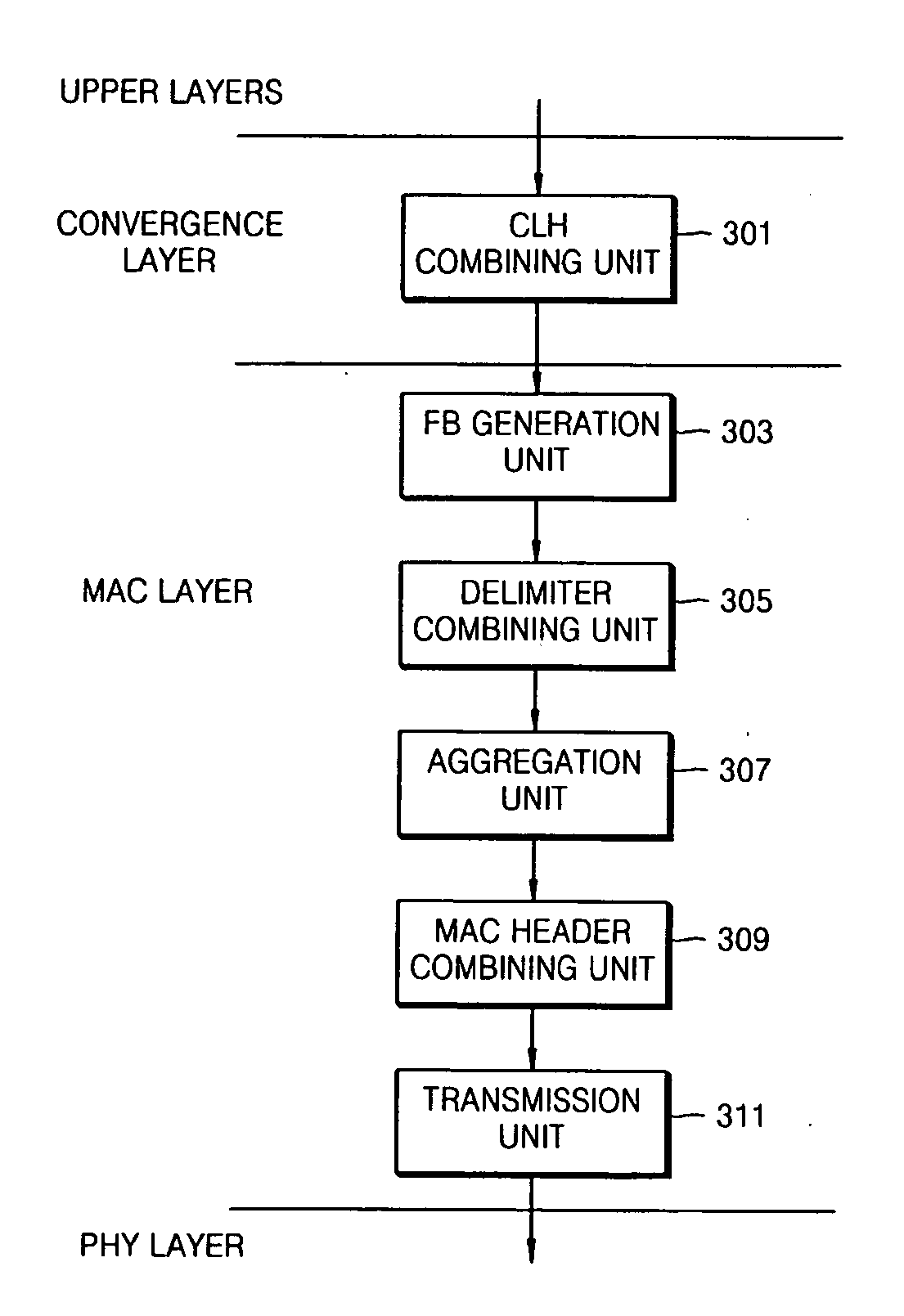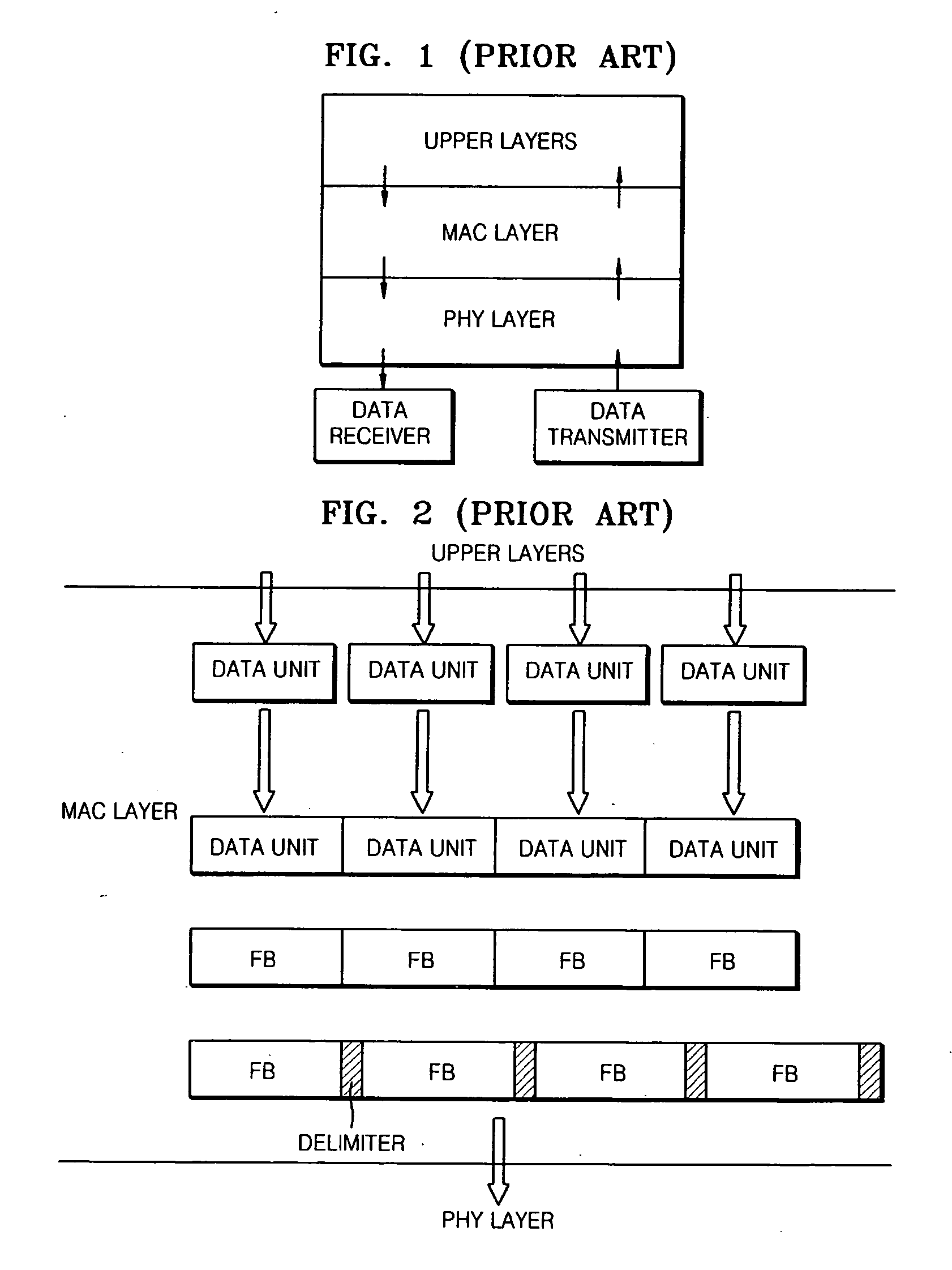Method and apparatus to transmit data on PLC network by aggregating data
a technology of aggregating data and transmission methods, applied in the direction of signal transmission/receiving via power distribution, transmission of single/parallel channels of television signals, securing communication, etc., can solve the problems of increasing complexity of implementation, frequent overhead, and inability to implement itself, so as to achieve efficient request and execution, increase throughput, and improve efficiency
- Summary
- Abstract
- Description
- Claims
- Application Information
AI Technical Summary
Benefits of technology
Problems solved by technology
Method used
Image
Examples
Embodiment Construction
[0051]Reference will now be made in detail to the embodiments of the present general inventive concept, examples of which are illustrated in the accompanying drawings, wherein like reference numerals refer to the like elements throughout. The embodiments are described below in order to explain the present general inventive concept by referring to the figures.
[0052]FIG. 3A is a diagram illustrating an apparatus to transmit data from upper layers to a PHY layer in a power line communication (PLC) network according to an embodiment of the present general inventive concept. FIGS. 6A through 6D are diagrams illustrating a method of processing data in the apparatus illustrated in FIG. 3A according to an embodiment of the present general inventive concept. The apparatus of FIG. 3A may be a PLC network device to communicate with another apparatus to transmit and / or receive data therebetween. The another apparatus may be another PLC network device or a device disposed outside the PLC network...
PUM
 Login to View More
Login to View More Abstract
Description
Claims
Application Information
 Login to View More
Login to View More - R&D
- Intellectual Property
- Life Sciences
- Materials
- Tech Scout
- Unparalleled Data Quality
- Higher Quality Content
- 60% Fewer Hallucinations
Browse by: Latest US Patents, China's latest patents, Technical Efficacy Thesaurus, Application Domain, Technology Topic, Popular Technical Reports.
© 2025 PatSnap. All rights reserved.Legal|Privacy policy|Modern Slavery Act Transparency Statement|Sitemap|About US| Contact US: help@patsnap.com



